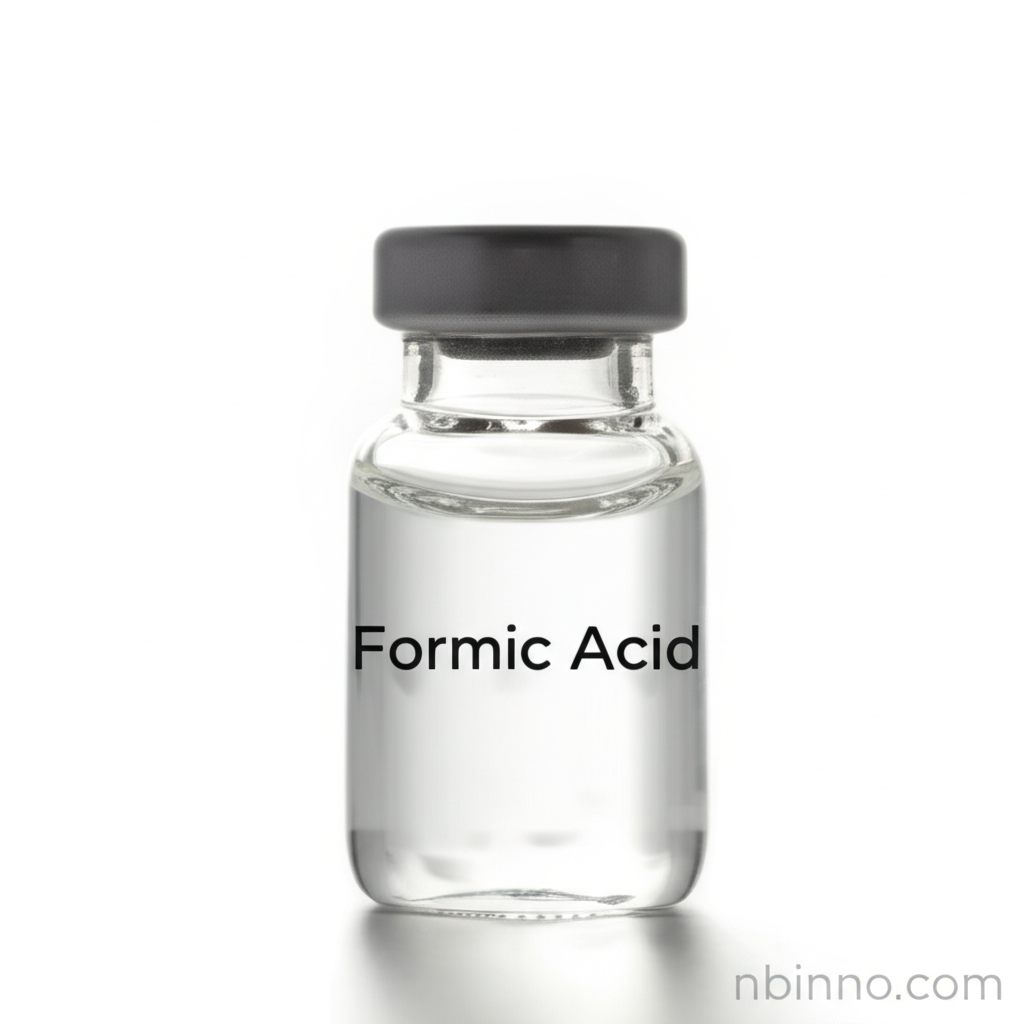Formic Acid (CAS 64-18-6): Properties, Applications, and Industrial Uses
Discover the multifaceted world of Formic Acid, a fundamental organic compound essential across numerous industries.
Get a Quote & SampleProduct Core Value

Formic Acid
Formic Acid, also known as methanoic acid, is the simplest carboxylic acid and a vital chemical intermediate. Its unique properties make it indispensable in a wide range of industrial processes, from textile dyeing to agricultural preservation.
- Explore the diverse formic acid industrial applications, covering sectors from leather manufacturing to advanced organic synthesis.
- Understand the critical role of formic acid in agriculture preservative capabilities, safeguarding animal feed and crops.
- Learn about the chemical reactions facilitated by formic acid organic synthesis, enabling the creation of complex molecules.
- Delve into the specific uses of formic acid in leather tanning, a traditional yet crucial application for hide processing.
Key Advantages
Versatile Chemical Intermediate
As a fundamental organic compound, formic acid serves as a key intermediate in the production of various chemicals, facilitating complex reactions in organic synthesis.
Broad Industrial Applicability
Its utility spans across multiple industries, including its role as a formic acid in agriculture preservative and its importance in formic acid uses in leather tanning.
Effective Preservative Agent
The antibacterial properties of formic acid make it an effective agent for preserving animal feed and silage, contributing to better farm management.
Key Applications
Leather Tanning
Discover how formic acid is crucial for degreasing and hair removal in leather processing, an essential step in formic acid uses in leather tanning.
Textile Dyeing and Finishing
Its role in textile manufacturing, aiding in dyeing and finishing processes, highlights its versatility in industrial applications.
Agriculture
As a preservative and antibacterial agent, formic acid is invaluable in agriculture, particularly for silage production and mite control in beekeeping.
Organic Synthesis
In the realm of formic acid organic synthesis, it acts as a hydride ion source and a mobile phase component, enabling various chemical transformations.
